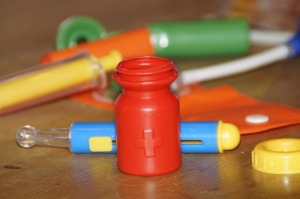
It doesn’t matter how well prepared you think you might be as a child care worker, toddlers and other small children have ways of exploring the world without the foresight of knowing what’s dangerous to them. That’s why it’s important to be on the lookout for both the hazards we all face when it comes to safety and especially those that are the domain of that most precious cargo of all—the children left in our charge.
First and foremost is the need to recognize a few essential ways child care workers should react to children in crisis situations.
Keeping in mind they don’t have the stamina adults do means being able to see quickly when a child has stopped breathing and understanding what needs to be done in any and all crisis situations.
#1 CPR
This is number one on our list of the top five critical areas for safety training for child care workers. Recently, scientific research has further improved the chances of survival by modifying the technique so the emphasis is now on chest compressions first, then checking the airway and lastly providing breaths. Chest compressions restore blood flow to the heart and that’s considered of paramount importance.
#2 Choking Training
The journal Pediatrics recently reported 34 children are admitted to emergency rooms everyday because they’ve choked on food and that statistic is enough to place choking training in the number two position on our list. Knowing the ages that are most susceptible is a proactive move that will make a difference and children up to the age of four are most at risk with candy and gum being the usual suspects.
#3 Toddler Triage
Most little cuts and scrapes are just that but everyone who works in the child care environment needs to know the difference between those minor sores and the ones requiring serious attention. Being aware that bandaging and cleaning a scraped knee requires different techniques than a puncture wound and knowing how to treat each one is a valuable asset. On a bigger scale, knowing the difference between a bug bite and a more severe allergic reaction is essential.
#4 Evacuation
It’s especially important to know when and how to leave a dangerous space under any circumstances but even more so when a day care facility is involved.
Not only should every child care worker be familiar with protocol involving evacuation procedures, but what processes to follow when everyone is outside the building as well.
#5 Identifying Risks
The world is more complex today for parents and the professionals who work in child care. More emphasis is placed on issues like the different types of food offered and the allergies that can be triggered by each product. The amount of sun exposure children get is another important factor that needs to be considered along with a host of other proactive measures.
Keeping your children safe in day care is the domain of the professional child care worker. These are experts dedicated to the highest level of continuous training to watch over their charges.
For more articles related to childcare please visit our Blog.
Author: Rob Starr